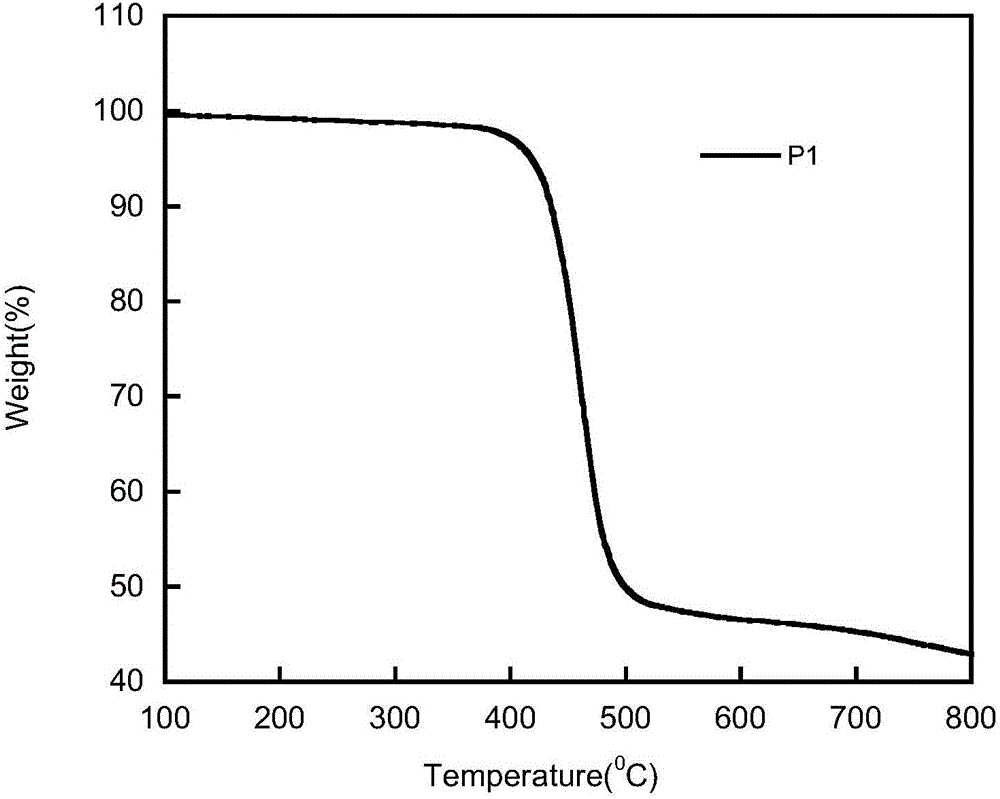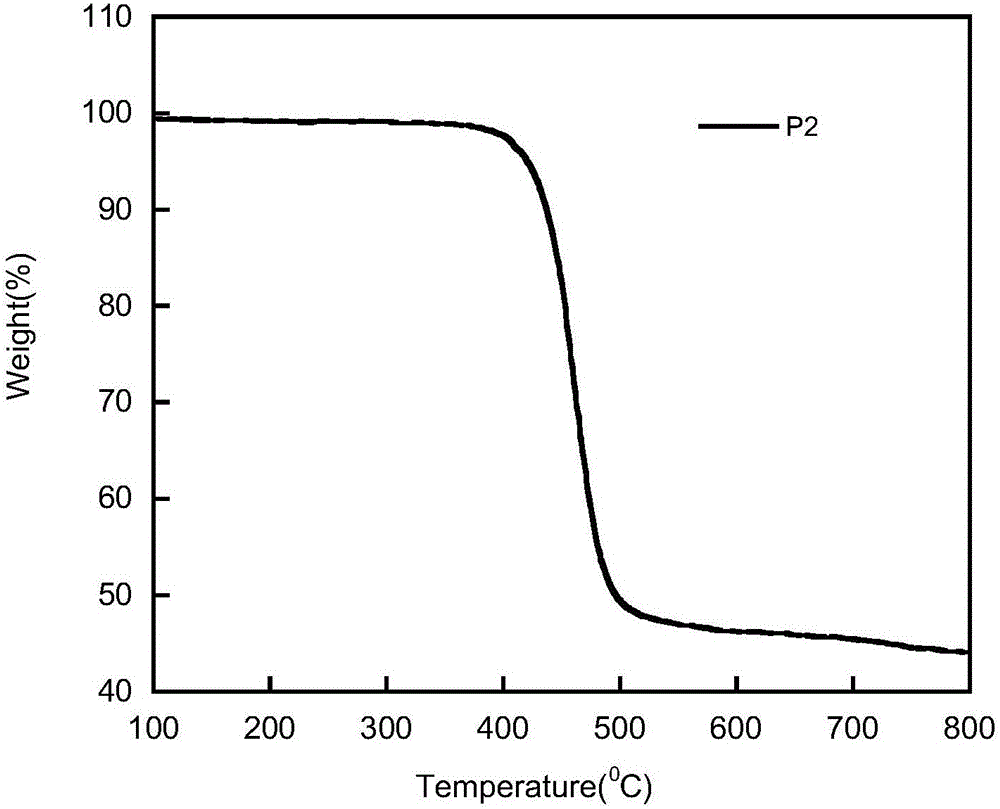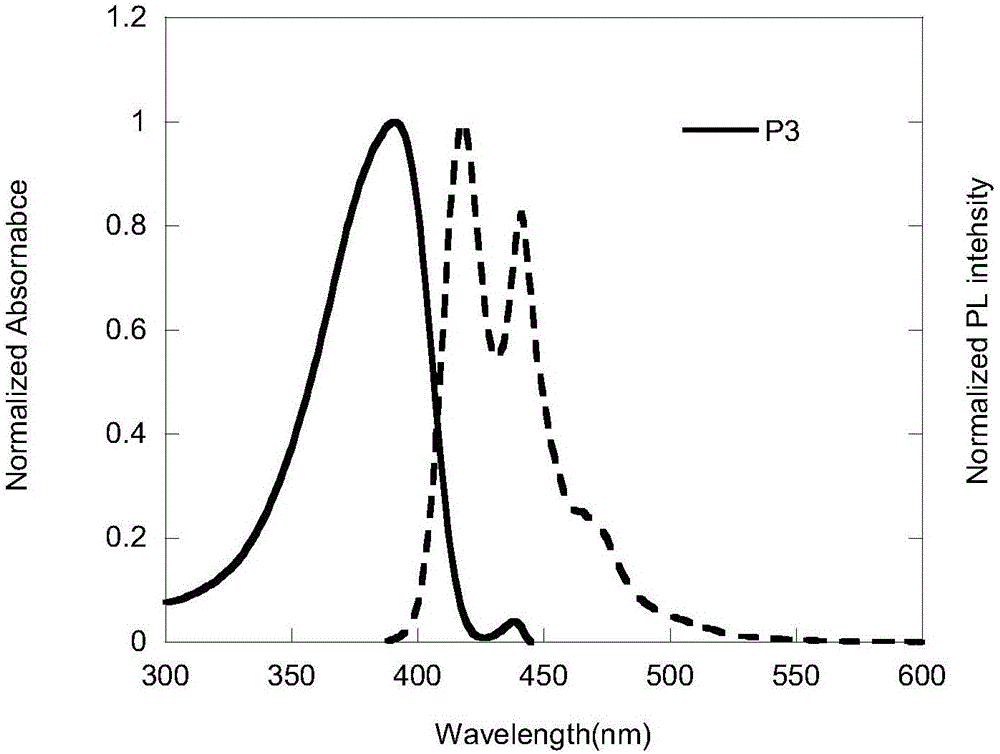Polyfluorene polymer with main chain containing non-conjugated units and preparation method and application of polyfluorene polymer
A technology of non-conjugated units and polymers, applied in the field of polyfluorene polymers and their preparation, can solve problems such as poor spectral stability, low luminous efficiency, and wide energy bandgap, and achieve simple preparation process, good solubility, The effect of improving device efficiency
- Summary
- Abstract
- Description
- Claims
- Application Information
AI Technical Summary
Problems solved by technology
Method used
Image
Examples
Embodiment 1
[0031] Embodiment 1 2, the preparation of 7-dibromofluorene
[0032] In a 250 mL three-necked flask, add fluorene (24.5 g, 0.1 mol), iron powder (88 mg, 1.57 mmol), and 100 mL of chloroform. After cooling in an ice-water bath, 35 mL of a bromine (17.6 g, 0.1 mol) / chloroform mixed solution was added dropwise. The temperature in the bottle does not exceed 5°C during the dropwise addition. After the reaction was completed, it was filtered and recrystallized from chloroform to obtain 20.3 g of a white solid with a yield of 83%. 1 H NMR, 13 CNMR, MS and elemental analysis results show that the obtained compound is the target product, and its chemical reaction equation is as follows:
[0033]
Embodiment 2
[0034] Example 2 Preparation of 2,7-dibromo-9,9-dioctyl-9H-fluorene
[0035] 2-Bromofluorene (9.7 g, 0.03 mol), benzyltriethylammonium chloride (0.07 g, 0.3 mmol), 90 mL of dimethyl sulfoxide, and 45 mL of aqueous sodium hydroxide solution (50 wt %) were added to a three-necked flask. Stir at room temperature to form a suspension. 1-Bromo-n-octane (12.5 g, 65 mmol) was added dropwise, and stirring was continued for 3 hours, followed by extraction with ether. The ether phase was washed with saturated aqueous sodium chloride and dried over anhydrous magnesium sulfate. The solvent was evaporated, and the product was purified by column chromatography using petroleum ether as the eluent to obtain a white solid. 1 H NMR, 13 CNMR, MS and elemental analysis results show that the obtained compound is the target product, and its chemical reaction equation is as follows:
[0036]
Embodiment 3
[0037] Example 3 Preparation of 2,7-diboronate-9,9-dioctylfluorene
[0038] Under an argon atmosphere, 2,7-dibromo-9,9-dioctylfluorene (5 g, 10.65 mmol) was dissolved in 180 mL of refined THF, and 1.6 mol.L was gradually added dropwise at -78°C -1 28mL of n-butyllithium, reacted for 2 hours, then added 25mL of 2-isopropoxy-4,4,5,5-tetramethyl-1,3,2-dioxaborane, at -78°C The reaction was continued for 1 hour, and the temperature was raised to room temperature for 24 hours. The reaction mixture was poured into water, extracted with ethyl acetate, and the organic layer was washed with brine and dried over anhydrous magnesium sulfate. After the solution was concentrated, a light yellow viscous crude product was obtained, which was purified by silica gel column chromatography (petroleum ether / ethyl acetate = 15 / 1, v / v was selected as the eluent), and the product was placed in the refrigerator for a long time to obtain a white solid. rate of 70%. 1 H NMR, 13 CNMR, MS and element...
PUM
| Property | Measurement | Unit |
|---|---|---|
| optical band gap | aaaaa | aaaaa |
| degree of polymerization | aaaaa | aaaaa |
Abstract
Description
Claims
Application Information
 Login to View More
Login to View More - R&D
- Intellectual Property
- Life Sciences
- Materials
- Tech Scout
- Unparalleled Data Quality
- Higher Quality Content
- 60% Fewer Hallucinations
Browse by: Latest US Patents, China's latest patents, Technical Efficacy Thesaurus, Application Domain, Technology Topic, Popular Technical Reports.
© 2025 PatSnap. All rights reserved.Legal|Privacy policy|Modern Slavery Act Transparency Statement|Sitemap|About US| Contact US: help@patsnap.com



